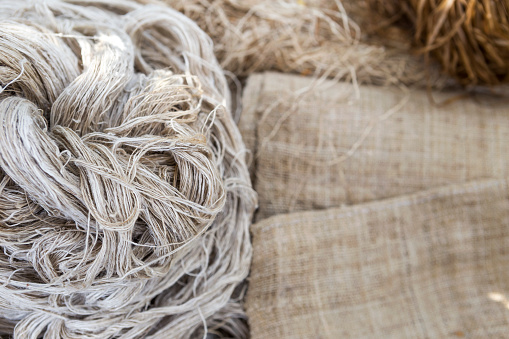
What exactly is hemp fiber?
Hemp Fiber is an eco-friendly material that is flexible enough to be utilized in diverse applications. It is currently employed in the production of clothing, sustenance, and shelter, along with a wide range of products derived from petroleum-based materials. It is also incorporated into nutritional food products such as hemp seed, hemp seed oil, and hemp protein powder.
The demand for organic hemp seed oil is continuously rising, and the reasons are numerous. India is one of the premier and most dependable bulk hemp seed oil suppliers and manufacturers in the field, we provide cold-pressed and filtered products free from any preservatives. Despite this, its extraordinary benefits and abundance of useful properties have led to widespread recommendations for its supplementation, endorsed by various professionals such as scientists, doctors, and nutritionists.

Characteristics Of Hemp Fibers
- Opting for Hemp Fiber in India supports ecological farming practices. Hemp wholesale firms are making significant contributions to various industries and the overall economy of India.
- It is among the most powerful natural Fibers in existence.
- Hemp Fiber exhibits superior strength compared to cotton, given its high absorbency and durability.
- The ultraviolet (UV) rays emanating from sunlight pose risks not only to your skin but also to your garments. Therefore, wearing cotton or other fabric clothes versus those made from Hemp Fiber will yield a substantial contrast.
- When comparing expenses, the prices of Hemp Fiber in India appear more economical.

The Uses of Hemp Fibres
- With roots dating back to ancient times, Hemp Fiber has been pivotal in the “textile industry”. Today, it is acknowledged for its skin-friendly attributes, warding off allergies and safeguarding against bacterial infections.
- The pricing of wood or timber, when compared to hemp, displays a significant variation. Hence, hemp emerges as an ideal substitute for “building materials”.
- The substitution of trees with hemp plants as the raw material for “paper production” is a brilliant idea and approach.
- It is widely utilized in the creation of tapestries, shawls, mats, banners, and various other forms of “apparel”.
- It’s time to transition from leather-based shoes to “hemp-based shoes” as the overall production cost is quite low.

Hemp Processing
Retting
Harvesting is accomplished using a conventional combine harvester machine. Once cut, the plants, which consist of two types of Fiber – long outer Fibers suitable for textiles, and short inner Fiber suitable for paper or industrial applications- remain in the field for a few days.
Decortication
Softening
Combining
Spinning
How did the trend of utilizing Hemp Fiber make its way into the apparel industry?
Before the 1980s, Hemp Fibers were known for their rough texture, causing companies to refrain from utilizing them in the design and production of apparel. The transformation occurred when Chinese scientists successfully devised a method to eliminate lignin from Hemp Fibers without compromising their inherent strength. Now, considering the properties, opting for apparel designed with Hemp Fiber is a sustainable choice, representing a positive step towards environmental protection.
What are the reasons behind the escalating interest of farmers in Hemp Fiber?
What expectations can be set for the future of Hemp Fiber?
- Hemp plants mature quickly, making them readily available as a raw material for various applications. With the potential to revolutionize the textile industry, Hemp Fiberreduces water consumption in the manufacturing process.
- From a sustainability standpoint, Hemp Fiberexcels in eco-friendliness, durability, and heat production. Its rapid growth makes it a time-efficient choice among natural Fibers, signaling a resurgence in the use of hemp products in the coming years.
- Companies and individuals are increasingly recognizing the advantages of Hemp Fiberand are gradually transitioning to the hemp industry, departing from traditional cloth manufacturing methods.
- We are recognized as one of the prominent Hemp Fiber suppliersin India.